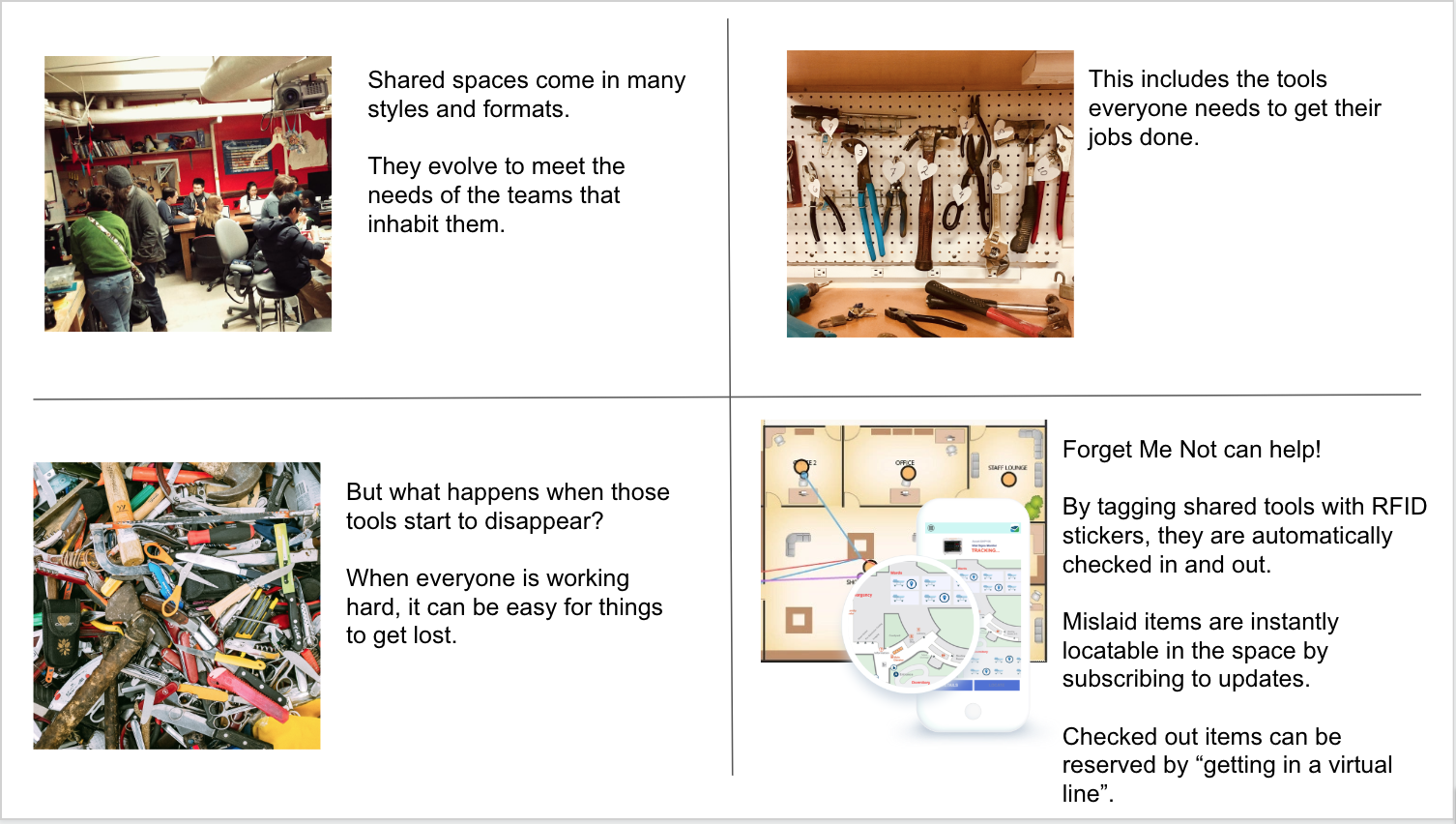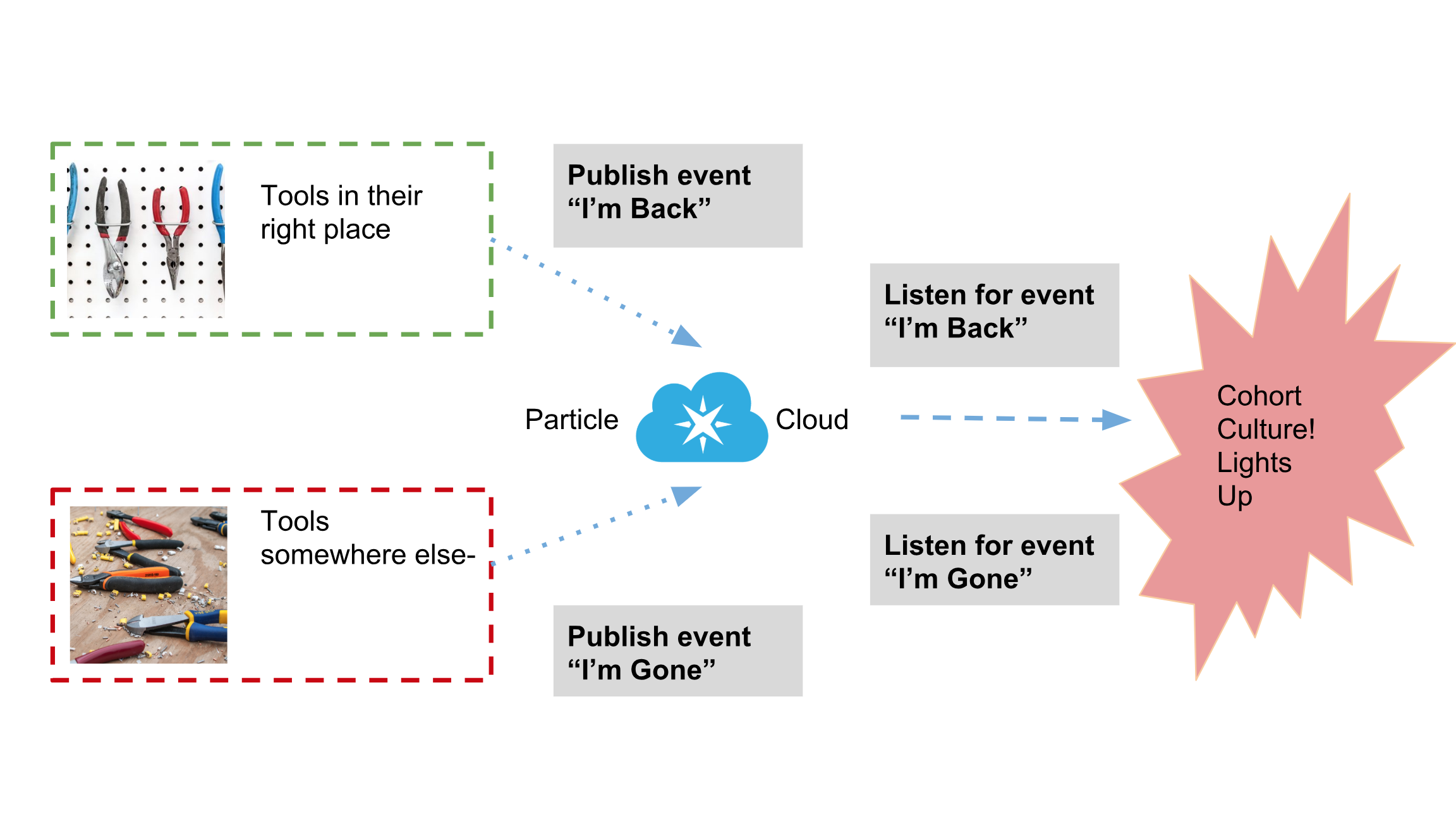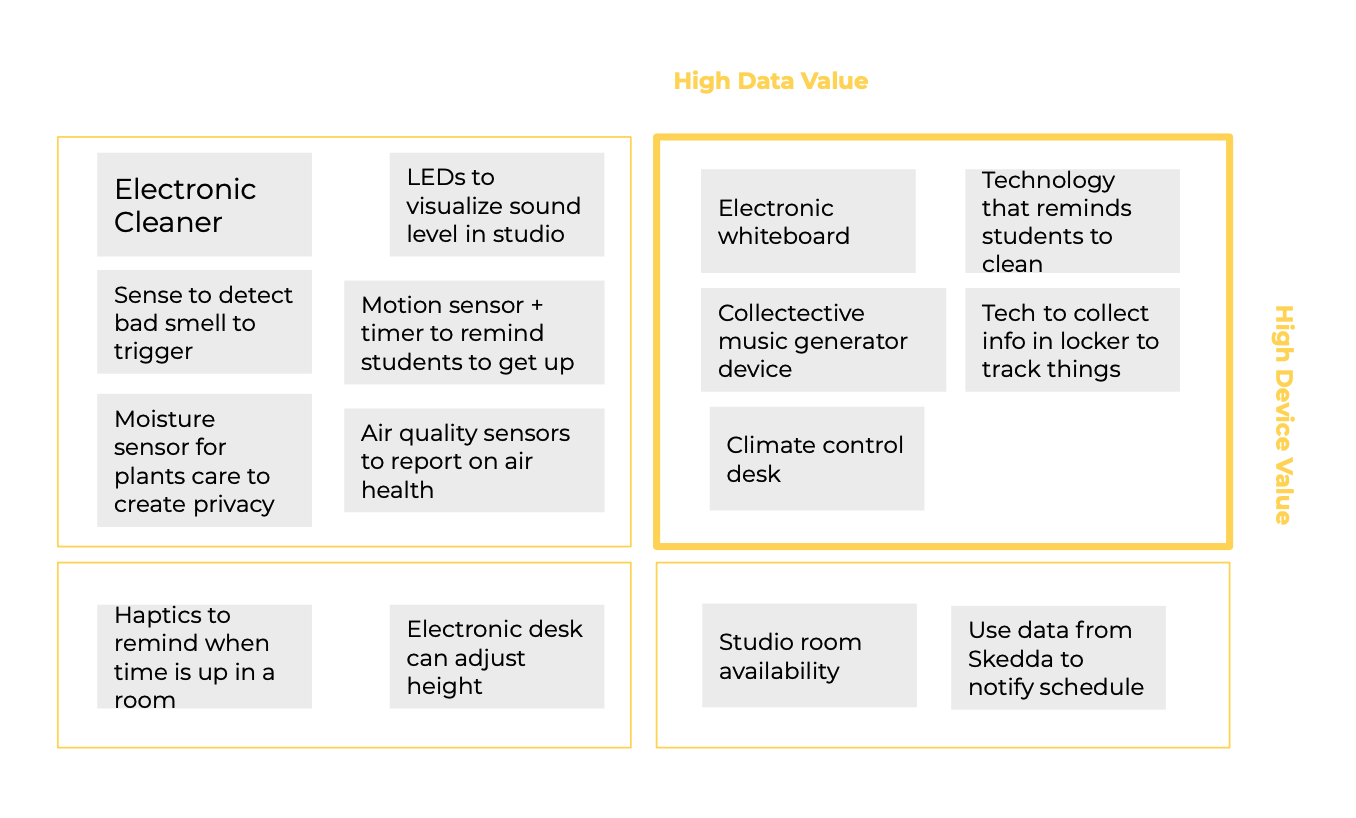Outcome
Given the amount of movement, stress, and activity in the studio, it is easy for the tools that the students rely on to get lost in the shuffle. This leads to tension between students- resentment when needed items are no longer available and increased costs to the school for replacements. We propose a silent look-out that helps students keep track of common-use items.
An ambient tagging system using RFID technology will silently record the presence and movement of valuable tools like wire cutters and post its location in the cloud. So not only can the user find them, but others can see and return them too.
- Our device will network with various other nodes around the studio to collect create a footprint of where tools from the IoT workstation are located.
- Ideally, it should be great if LEDs could indicate how long an item has been away from its allocated area to draw attention and encourage it to be put away.
- One-way of enriching the interaction is by personalizing the RFID tags - so we’d not only know where the item was last seen but also who took it!
Process
Brainstorming
To begin the project, each individual toured the studio space and identified opportunities for improvement. Afterward, we sat together and spent 8 minutes coming up with eight ideas each. We posted them up on a whiteboard and grouped them, narrowed, and regrouped.
While we ideated, we recognized that many of the concepts had a tracking feature. One idea particularly interested everyone- a locker that could tell you what items you left inside. Inspired by Tile, we came up with the idea of tagging power cords when they are too far from their computer.
After sharing in the slack group and getting feedback, we pivoted to our value opportunity- tagging and tracking for shared tools from the IoT workspace to reduce frustration and costs. Sharing helps build community, but they can be easily lost if one person forgets to return them.
In order to create an ambient tracking our device requirements were:
Must: Conform to existing routines, not impede the use of the tool, be discreet
Should: Show the location of the tool, send a notification when a tool has been taken and returned
Could: Enable students to get into line for a tool
Components & User Experience
In storyboarding the experience, we focused on wire cutters, since they are the most demanded and always elusive tools in the workspace. Initially, we planned to use two sensors, one for the "home" and one for the table. This is ideal and should be considered for future implementation. However, the complexity kept us from doing that for the prototype.
During planning with the class, we noticed that most teams had opted for playful interactions. This limited our networking options. We decided to partner with two teams: we would house our table sensor in the Rings of Success and Shhh! would subscribe to our event and light up when tagged items are taken and returned.
To enhance the user experience in future iterations, we plan to add the ability to locate the item, see who last used it, and get into line to use items.
Building the Prototype
The first prototype was a working prototype that consisted of two buttons. When the green button was pushed it triggered the even "I'm Back"signaling an item had been returned. When the yellow button was pushed it triggered the event "I'm Gone", which meant an item had been taken. Once we successfully published these events, we gave the information to Shhh! to trigger their light.
After we successfully tested the working prototype and received feedback on it, we begin to build the functional prototype. This included adding a UHF RFID reader and tags. This enabled us to begin publishing events based on the proximity of the tag to a reader.
While not the most visually interesting device in the studio, we do think the usefulness of its function more than makes up for it! We spent a lot of time exploring the scanner and attempting to get it working. It proved to be a challenging sensor interaction, despite the relative simplicity of the concept. The team regretted not being able to advance the code further, but hope that future development with open doors to unlock the device's true value.
We had the opportunity to showcase our device to professionals in the domain of education and there was a lot of interest in it. This pleased us and led to many interesting conversations about the potential for our device, both good and cautionary.
The good:
- Using the tags to store memories of what the tools had been used to make in the past or instructions on how to use them.
- The device becomes a member of the cohort and can report to the cohort where tools are (instead of having Amanda facilitate.)
- Adding the ability to identify WHO took the tool and remind them to return it.
The cautionary:
- The device cannot increase friction between the user and the tool, it must be seamlessly integrated as that is the primary value here.
- Introduction of Amanda (or other administrators) changes the dynamic in the studio from student-owned.
You can upload files of up to 20MB using this form.





